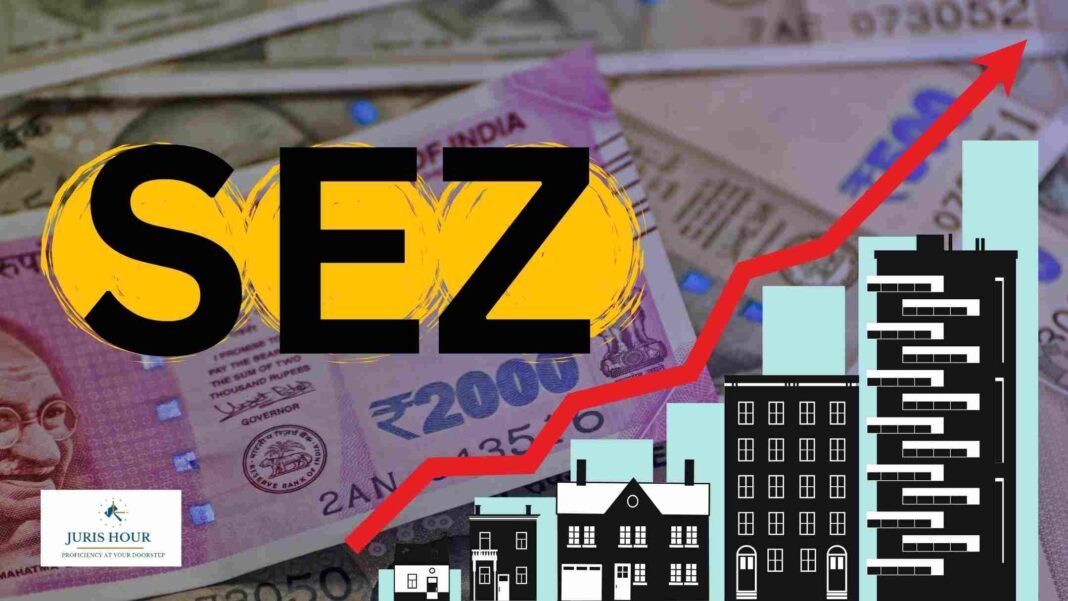A high-level government panel comprising officials from the Commerce and Industry Ministry, NITI Aayog, and representatives of export bodies is finalising a new framework for India’s Special Economic Zones (SEZs).
The proposed changes aim to revive the country’s export competitiveness, especially in the manufacturing sector, following steep US tariffs that have disrupted supply chains and rendered several SEZ-based units unviable, according to official sources.
The initiative comes in response to multiple SEZ units—particularly those heavily dependent on the US market—seeking de-notification after sharp tariff hikes made exports commercially unsustainable. Although exporters have continued to supply to the US even at losses to retain market presence, many now face severe cost pressures.
India’s SEZs enjoy several fiscal benefits such as duty-free import and domestic procurement, yet their global competitiveness has waned. Official data shows that India’s SEZ exports stood at $172 billion in FY25, spread across 276 units, with domestic sales forming just 2% of total production. Analysts point out that Indian SEZs have failed to emulate the success of China’s export zones, which transformed that country’s manufacturing ecosystem.
‘Reverse Job Work’ Back on the Table
One of the key proposals being examined is the introduction of a ‘reverse job work’ policy, allowing SEZ units to undertake manufacturing or processing work for the domestic tariff area (DTA). Exporters argue that this flexibility is vital to optimise labour and equipment usage, particularly during periods of weak export demand.
“Reverse job work should not pose a problem in principle,” an official familiar with the discussions said. “The main challenge lies in ensuring parity on duty exemptions. Domestic units pay duties on capital goods and inputs, whereas SEZ units do not. Some mechanism must be worked out to ensure fair competition.”
Exporters have long demanded such a policy to improve operational efficiency and reduce idle capacity in SEZs. The Commerce Ministry is considering implementing this measure through administrative or policy routes rather than waiting for the long-delayed SEZ Amendment Bill. However, sources said that the Finance Ministry has not yet given clearance, citing possible revenue losses.
Gems & Jewellery Sector Hit Hardest
Among the industries most affected by the US tariffs is the gems and jewellery sector, which accounts for nearly 65% of India’s studded jewellery exports from SEZ units. With the US being the largest market for Indian gems and jewellery, exporters are facing mounting losses.
Following a representation to Finance Minister Nirmala Sitharaman in September, the Gem and Jewellery Export Promotion Council (GJEPC) urged the government to:
- Permit SEZ units to engage in reverse job work and DTA sales,
- Extend export obligation periods for US-bound shipments, and
- Provide an interest moratorium on packing credit and working capital loans.
“These measures will not only help safeguard jobs but also support the competitiveness of Indian exporters during this challenging period,” the GJEPC said in a statement.
Concerns Over SEZ Trade Balance and Policy Uncertainty
Experts warn that India’s SEZs are increasingly facing a negative trade balance, especially after the withdrawal of the Net Foreign Exchange (NFE) criteria, which was earlier used to determine incentive eligibility.
According to a report by the Indian Council for Research on International Economic Relations (ICRIER), while exports of traditional handcrafted gold jewellery have stagnated, imports of raw materials have increased, raising concerns over sustainability.
The report also highlights that the number of gems and jewellery units in SEZs has declined sharply—from around 500 before 2019 to about 360 in 2021-22. The sector’s share in total SEZ exports dropped to 15.7% in 2020-21, due to a combination of factors such as withdrawal of fiscal benefits, stronger incentives in competing countries, pandemic-induced disruptions, and policy uncertainty around SEZ operations.
Low R&D Investment and Weak FDI Inflows
The ICRIER study further revealed that R&D investment remains minimal across SEZs. Out of 14 surveyed jewellery SEZ units, only four reported any investment in research or technology upgradation. The lack of modern skill training, inadequate funding, and limited technological adoption continue to hinder productivity.
Foreign Direct Investment (FDI) inflows into SEZs have also been alarmingly low. “FDI plays a critical role in technology transfer, branding, and market expansion,” the report noted. “However, India’s SEZs lag behind due to weak investment protection mechanisms, absence of bilateral investment treaties, and limited global marketing efforts.”
Read More: DGGI Bhubaneswar Arrests Maharashtra Man Arrested for Rs. 325-Crore GST Fraud

